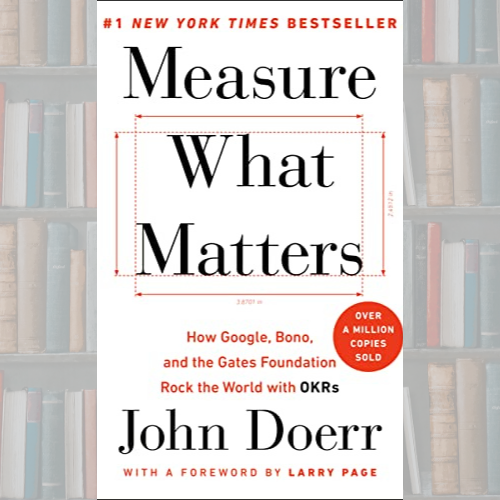By John Doerr

Why You Should Read This OKRs – Objectives and Key Results – are not just letters, they are a secret ingredient to creating an environment where your team builds goals and works to achieve them together. Here is the link to the Audible version of the book but I also recommend buying a physical book that you can dog-ear and highlight.
John Doerr is the legendary venture capitalist who helms Kleiner Perkins, Caufield & Byers. When I commenced working with startup technology firms in 1995, I developed a deep appreciation for his decisions to invest in early-stage companies when they were early stage (Netscape, Sun Microsystems, AOL, Tandem Computers, Compaq, Electronic Arts, Square, Nest, Google, Twitter, Amazon, DoorDash, and Slack are a few of the household name tech firms he invested in when they were start-ups.) His investments were impactful to the world due to his complete understanding of technology, product management, marketing, and finance that resulted in scalability. But the funding he provided was more than green as he shared the leadership skill that he developed while working at Intel early in his career. It is this foundational skill that enabled hundreds of companies to achieve their successes - OKRs
SPOILER ALERT – It is best NOT to define any goals by financial targets! He opens the proverbial kimono on OKRs – what they are; why they are important; how to create them; and how to measure them. Objectives and Key Results are not top down and the reason why he focuses in on this concept is because he found throughout his career that teams create engagement and people become tied to achieving the goals that they establish together. Seeing and contributing to impact is an important part of creating an environment grounded in psychological safety. He further describes how CFRs – Conversations, Feedback, and Recognition – are a critical part of the ecosystem needed to foster the development and achievement of OKRs.
How You Can Apply This Throughout the book, he offers examples of how OKRs enabled many global organizations (such as Google, The Gates Foundation, RED, Intuit, and YouTube) to create collaborative, realistic, and measurable goals that enabled these firms to thrive – and you can too! The appendixes contain examples of what a good OKR looks like and how to stay away from ineffective OKRs. Use the guides to create habits that foster engagement for your team.
Additional Materials For Reinforcing What You Learned If you want to reinforce what you gained from this book by listening to a podcast, you might enjoy: Masters of Scale-Rapid Response with John Doerr. The conversation details why he refocused the investment practices of Kleiner Perkins to supporting companies that work towards significant decarbonization. He incorporates OKRs throughout the conversation and in his most recent book – Speed and Scale.
To look at OKRs, KPIs, and financial statements through the lens of being your own CFO, check out this interview with Courtney Leimkuhler, the co-founder of Springbank Collective, with The Wie Suite. Another one of The Wie Suite blog articles focuses on the nuances and overcoming the four road blocks in financial modeling with Holly Howard.
This book review was written by Shelley A. Svoren, VP – Leader Development for IAWA and who is the CEO + Founder of Infinite Branches. You can DM her on LinkedIn.
